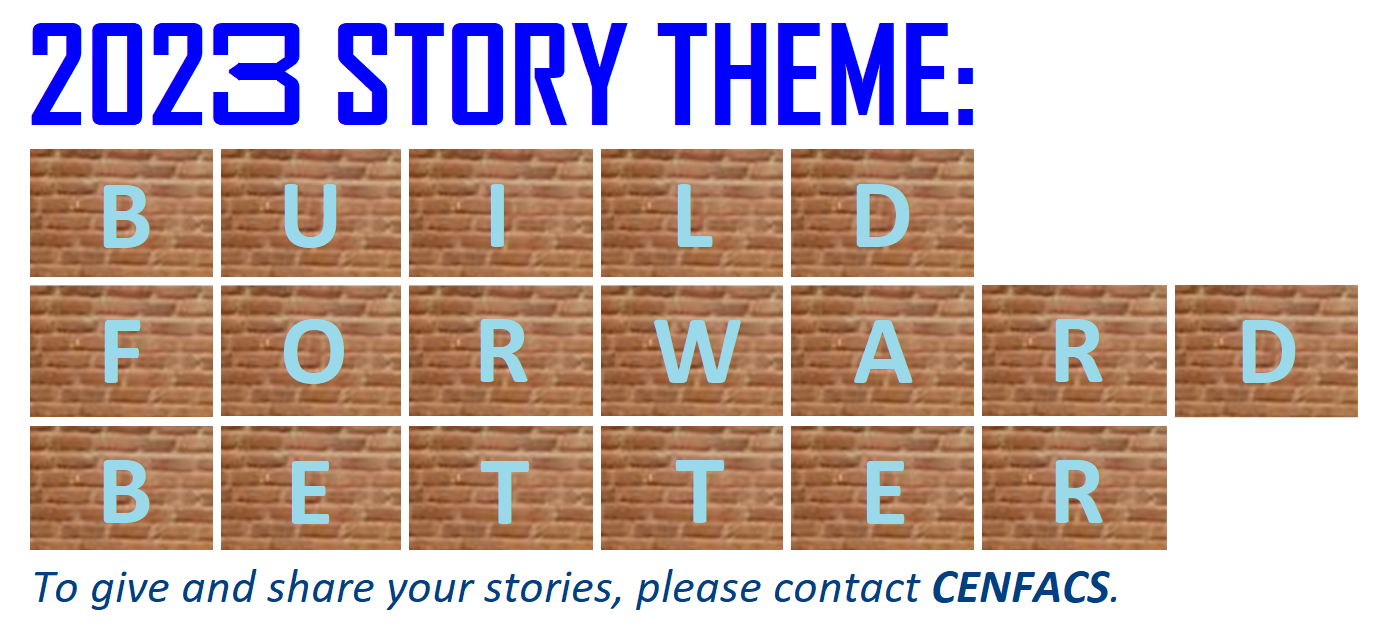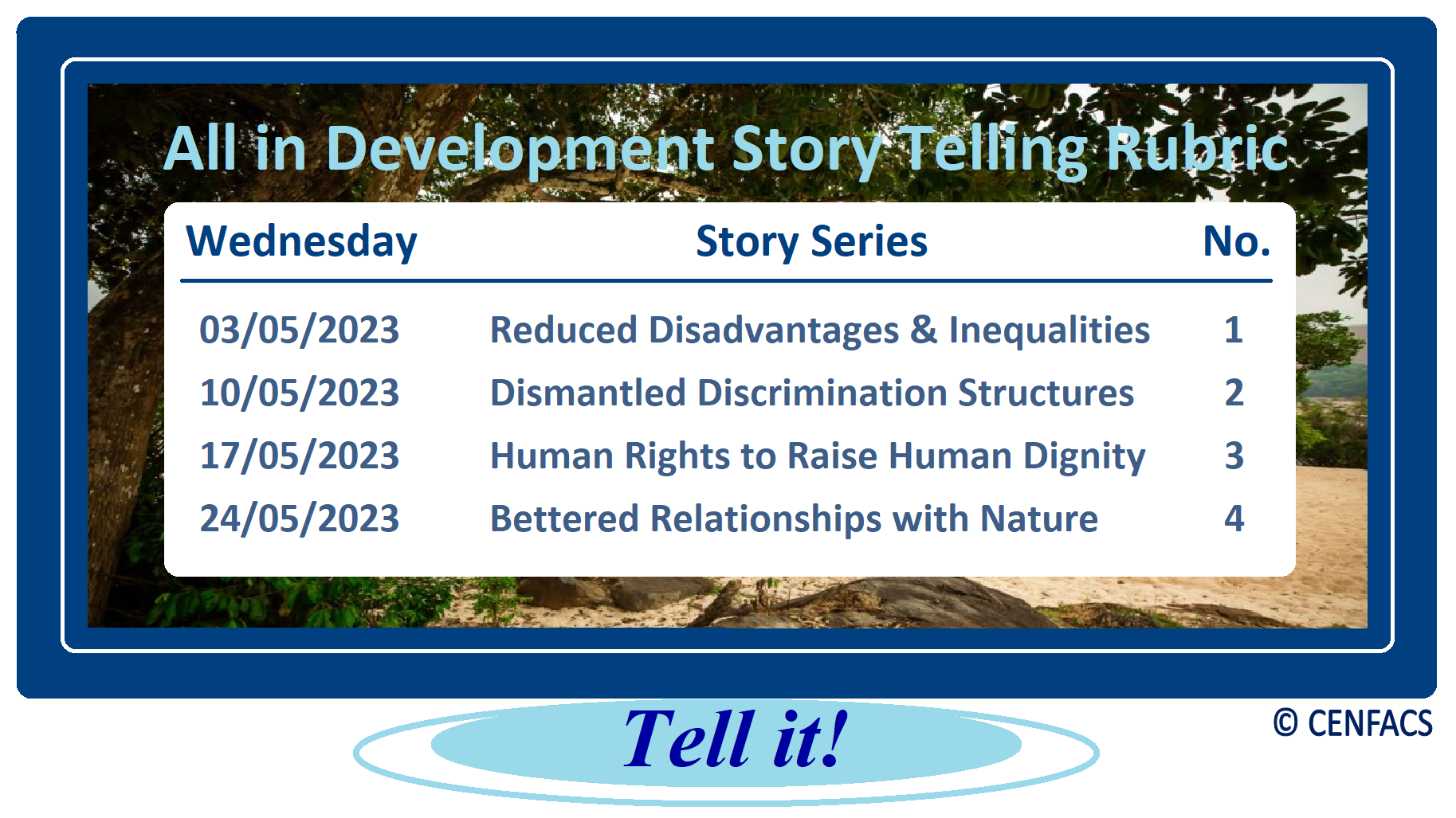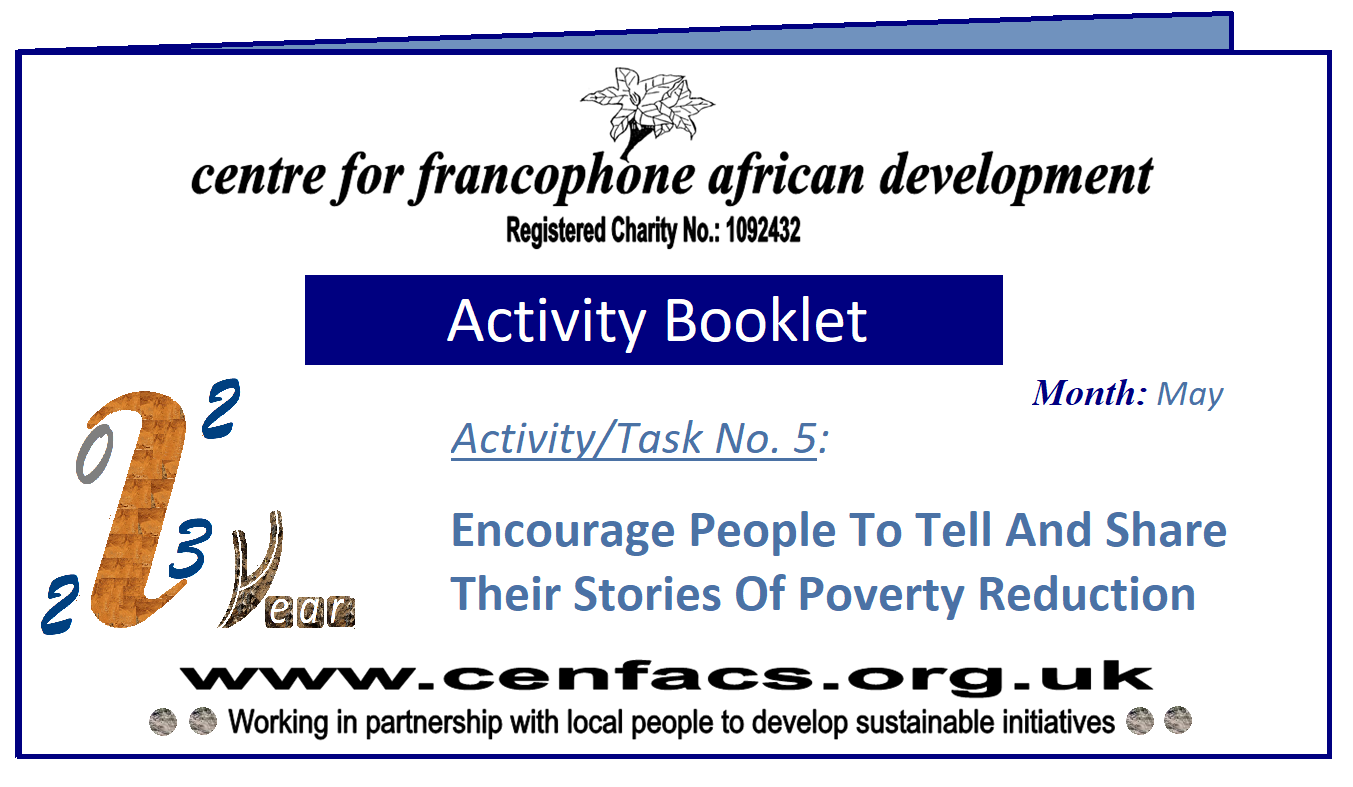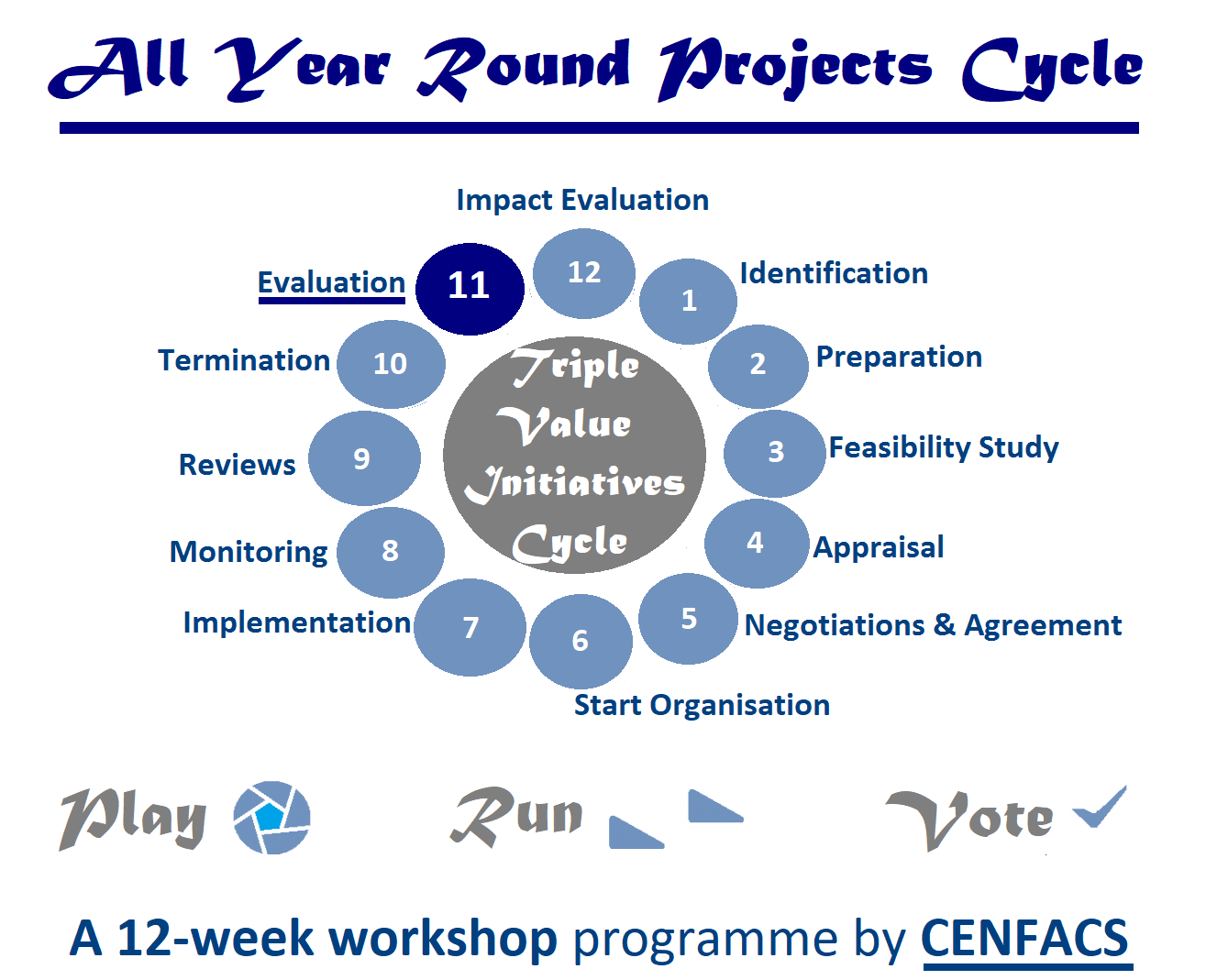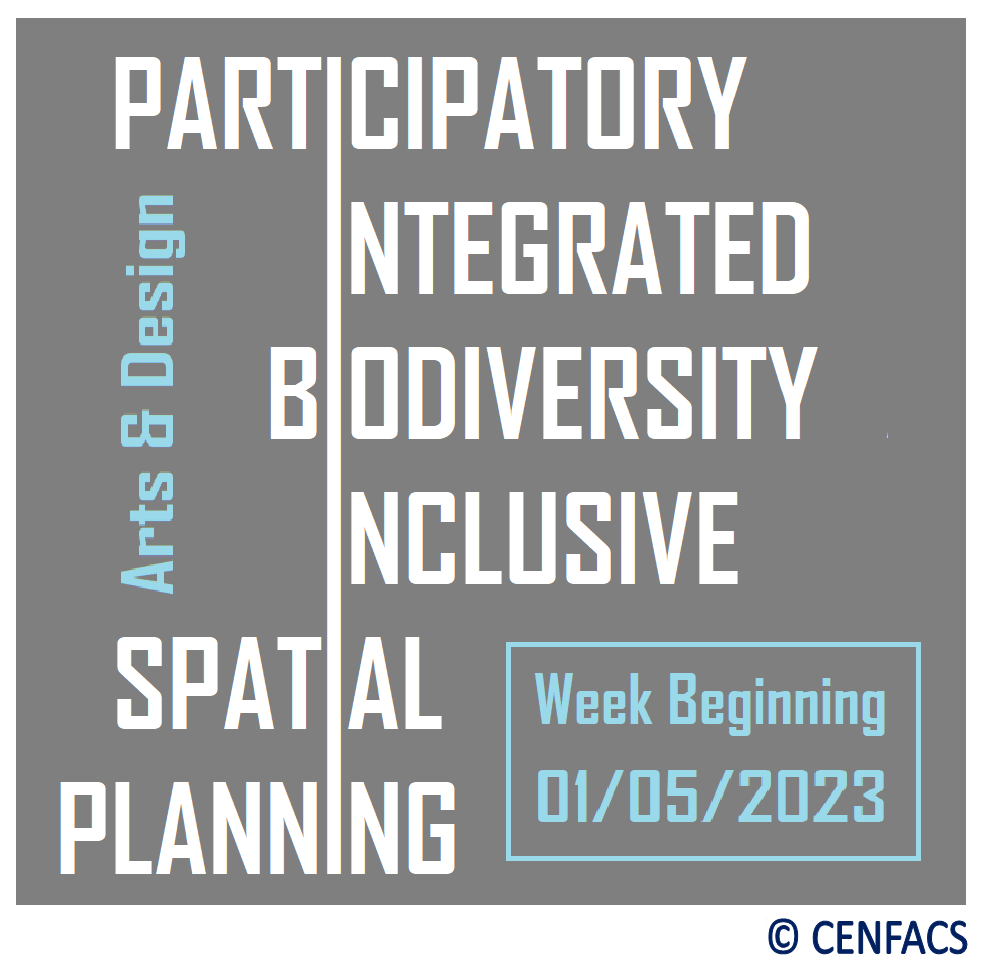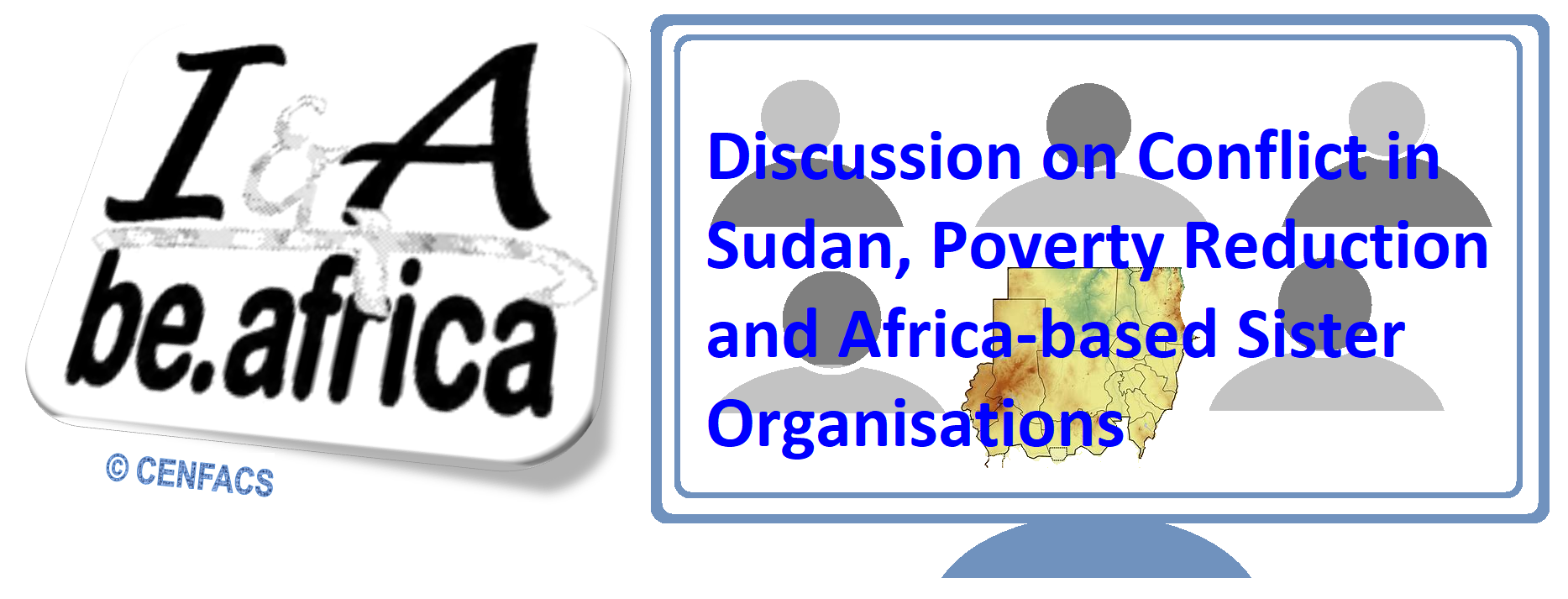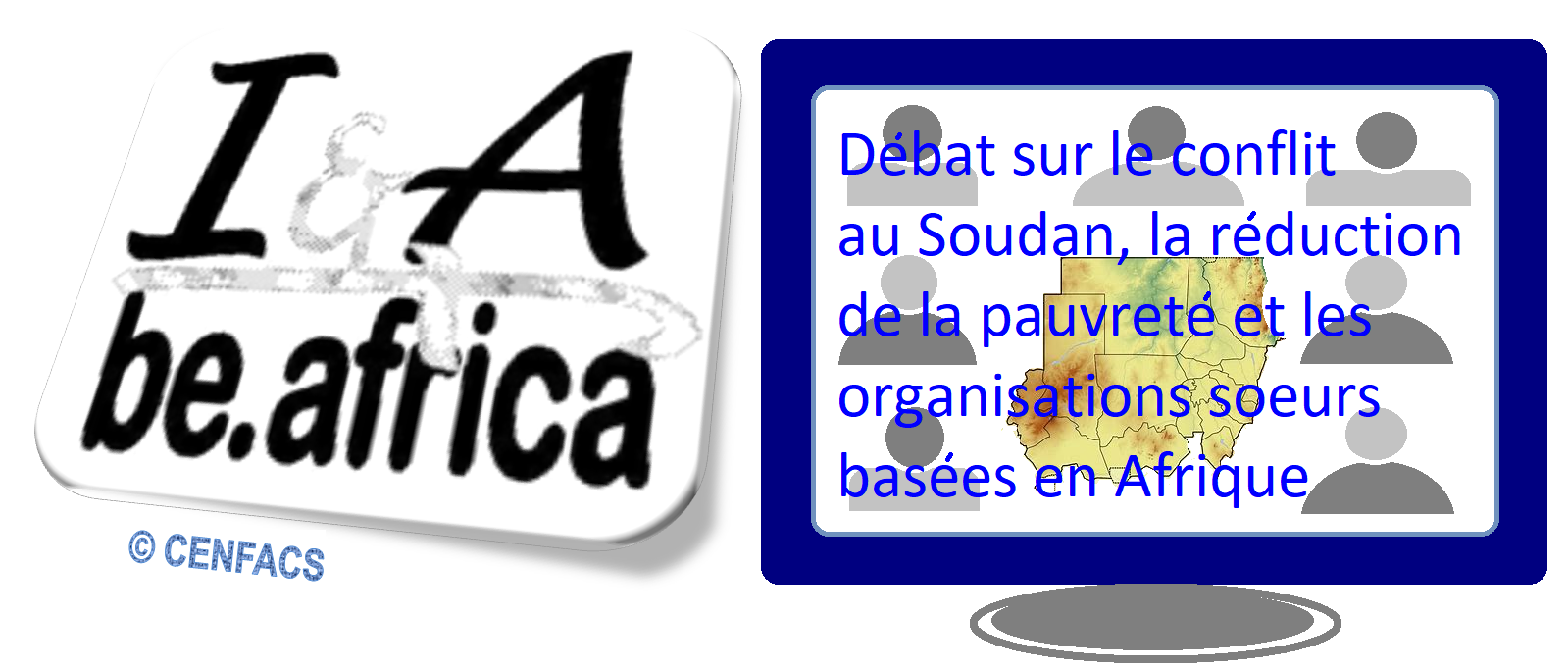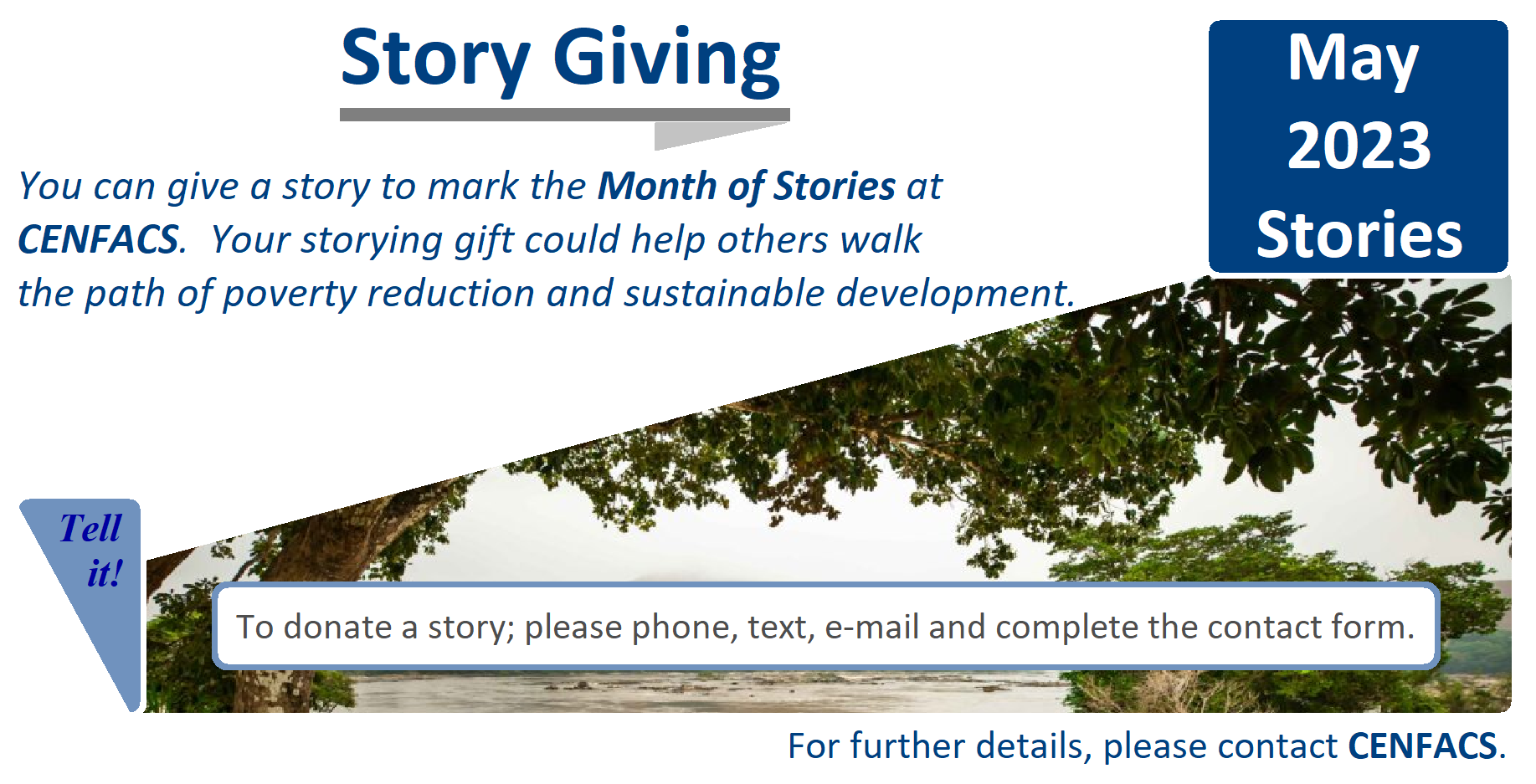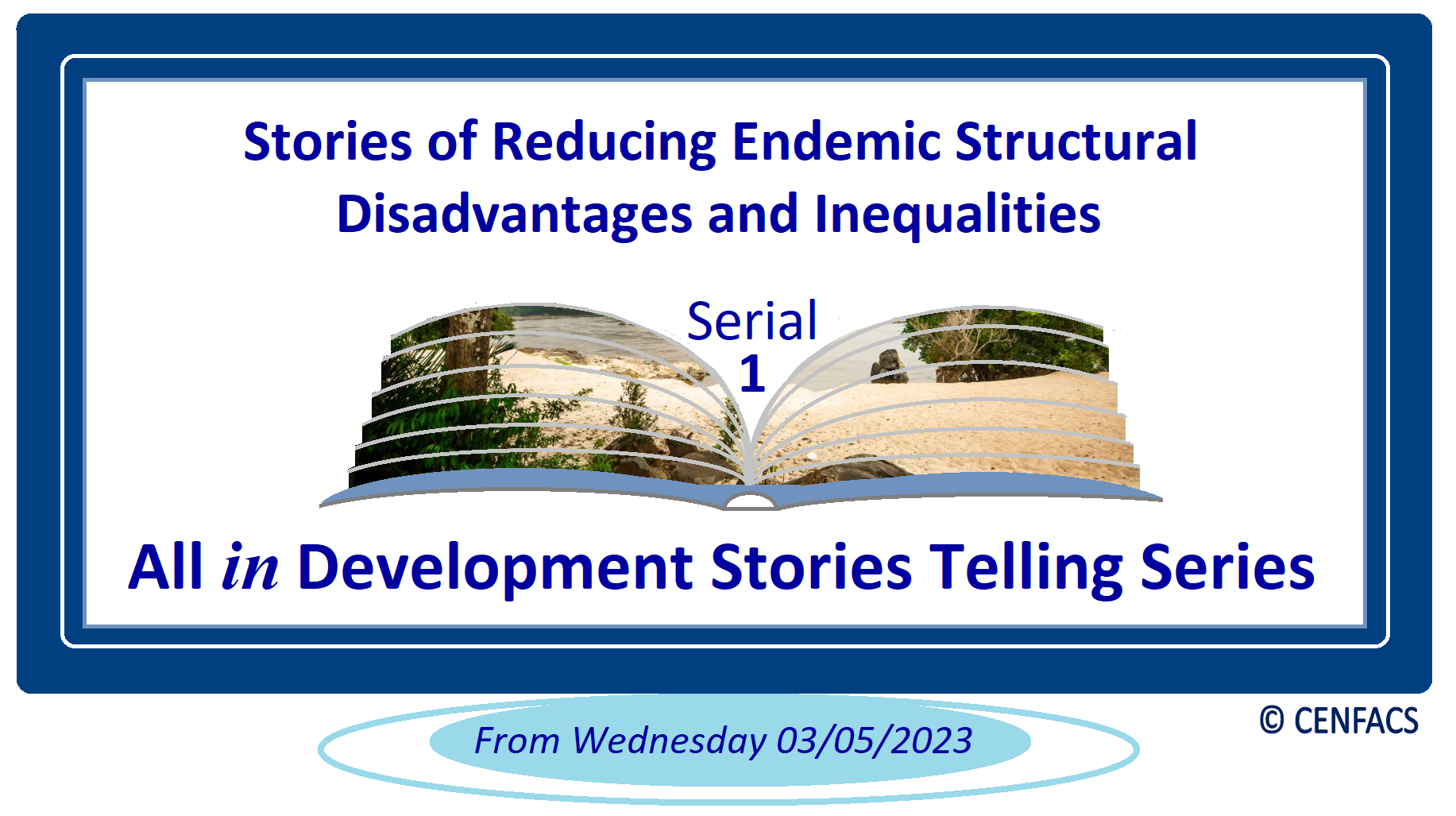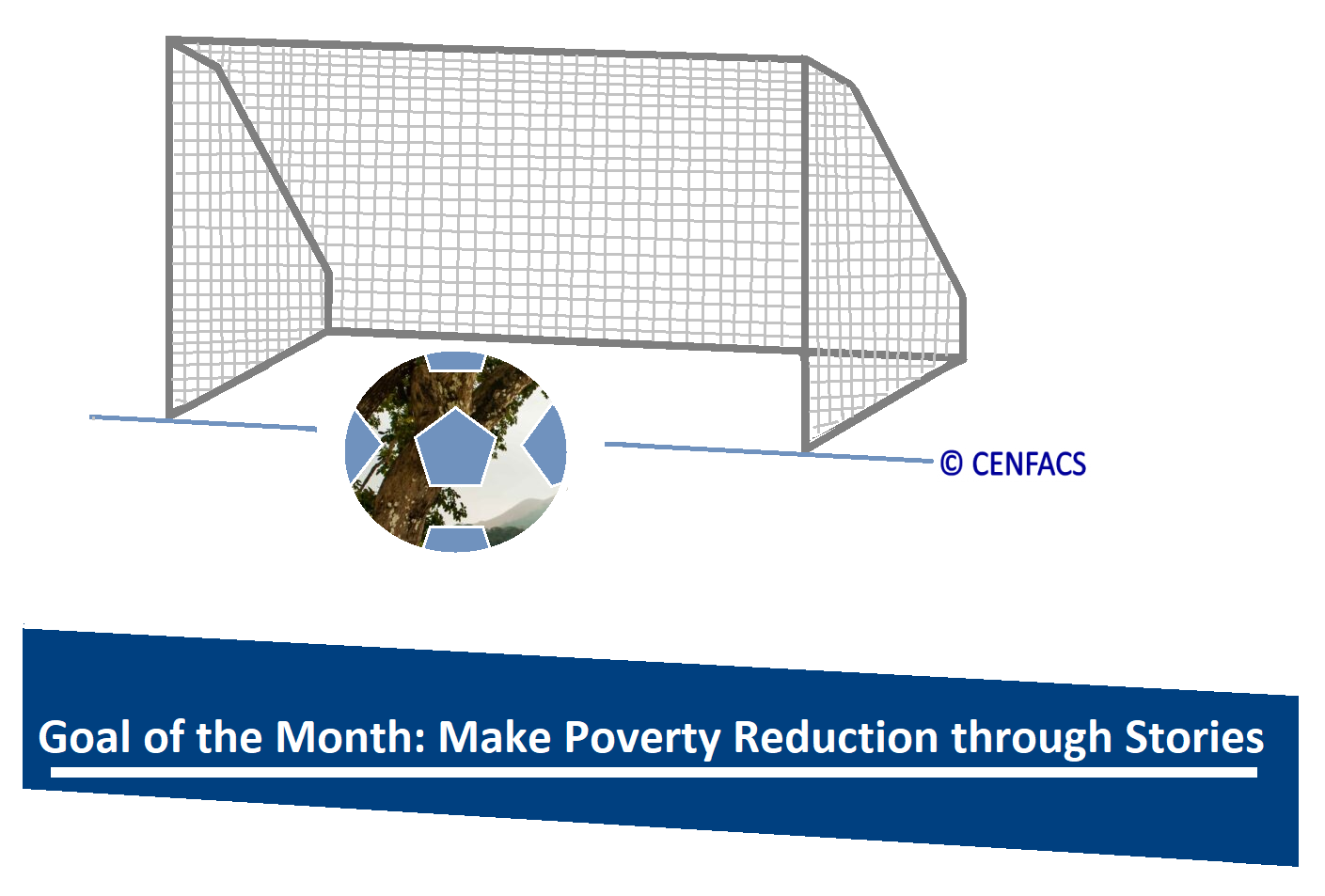Welcome to CENFACS’ Online Diary!
03 May 2023
Post No. 298
The Week’s Contents
• May 2023 Stories – All in Development Stories: Stories of Building Forward Better from the Cost-of-living Crisis
• All in Development Story Telling Series/Programme 2023
• Activity/Task 5 of the Influence (i) Year/Project: Encourage People to Tell Their Stories of Poverty Reduction
… And much more!
Key Messages
• May 2023 Stories – All in Development Stories: Stories of Building Forward Better from the Cost-of-living Crisis
Story telling is our main content for the month of May. It is the month and time of the year we dedicate ourselves to telling and sharing poverty relief and sustainable development stories.
• • Why do we tell and share stories?
This is because in whatever we do to help reduce poverty and appeal for support to development process, there is always a story to tell and share from various places we intervene and from different individuals and communities or organisations involving in our work.
• • How do we tell and share these stories?
We do it through All in Development (AiD) Stories project, which is our storytelling project. There is an explanation about this project that can be found under the Main Development section of this post. Every year, there is a different theme for this storytelling project.
• • This year’s theme for AiD Stories project
This year, the theme for AiD Stories project will be about Stories of Building Forward Better from the Cost-of-living Crisis.
These stories will be…
a) about how people and communities are trying or have tried to build forward better from the cost-of-living crisis
b) of
∝ reduction of endemic structural disadvantages and inequalities
∝ positively transforming our relationship with nature
∝ dismantling structures of discrimination disadvantaging the poor
∝ building on the moral and legal framework of human rights that places human dignity at the heart of policy and action.
They are the tales of physical, social, environmental and economic building forward better, instead of going to or building back the structures, systems and ways of life that led to the cost-of-living crisis.
Entries for these May Stories were opened since last March when we announced the general theme of Spring Relief 2023, which is “Build Forward Better Together Cleaner, Greener and Safer”. So far, some people have shown some interests. For those who have not yet submitted or told us their stories, this is the month to do it.
• • Underlying principle of AiD Stories project
The principle of AiD Stories project is that it is about stories by volunteers or people who are giving their stories not for money or not being paid for their experience they had in relation to the story theme. However, this principle does not stop anybody to provide a story even if what they are saying come from their paid position.
Besides this general principle, we have two criteria we would like to highlight about the theme of AiD Stories project for this year.
• • Criteria for the theme of AiD Stories project 2023
~ 1st Criterion
For this year’s AiD Stories project, we are mainly interested in Stories of building forward better together cleaner, greener and safer from the cost-of-living crisis, as mentioned above. They are the stories of those who hit rock bottom of poverty because of the cost-of-living crisis and are trying to bounce forward in a sustainable way.
~ 2nd Criterion
We are registering people’s personal experiences of being or at risk of being left behind in the process of building forward from the cost-of-living crisis. Experiences show that in many crises, there is always a possibility that aid/help to the crisis does reach everybody or if its does it does not reach them proportionally or equally. For those who have not been reached, their personal stories need to be heard as well.
Additionally, we would like to select amongst submitted stories the best ones.
• • Selecting the top real true story of the month
This year, we would like to select the top three stories of poverty reduction of the month and the real true story of poverty reduction of the month. To do that we will use impact story approach. This approach is often used when monitoring and evaluation are restricted. What do we mean by that?
We mean what ‘civicus.org’ (1) says about impact stories, which is:
“Impact stories are a useful way to systematically documenting anecdotal evidence that expected activities occurred, and the perceived results thereof”.
Our storytelling assessors will try to capture elements of storytelling that respond to our storytelling criteria. Stories that build inclusion and inspire people to change have more change to win more votes/points than other ones.
To facilitate and organise ourselves in the way of telling these stories, we are going to do it through a series or programme or a timeline of scripts. There is more information about this series below.
For more information on AiDS project and this year’s storytelling focus and scripts, please read under the Main Development section of this post.
To tell your story of change for change to CENFACS, please contact CENFACS for story telling terms and conditions.
• All in Development Story Telling Series/Programme 2023
The 2023 series of AiDS Telling Programme starts from the 3rd of May 2023, every Wednesday afterwards and will last until the end of May 2023. These series, which are part of May 2023 Stories, are a timeline of scripts or a set of notes arranged in line to tell and share Stories of Building Forward Better from the Cost-of-living Crisis.
To arrange this programme, we referred to what the Department of Economic and Social Affairs of the United Nations (2) states about building forward better, which is
“Building forward means not only that no one is left behind but that people living in poverty are actively encouraged and supported to be in the front, engaging in informed and meaningful participation in decision-making processes that directly affect their lives”.
The same Department of Economic and Social Affairs of the United Nations explains that
“People living in extreme poverty … do not support a return to the endemic structural disadvantages and inequalities. Instead, they propose building forward by transforming our relationship with nature, dismantling structures of discrimination that disadvantage people in poverty and building on the moral and legal framework of human rights that places human dignity at the heart of policy and action”.
From the above statements, we can organise our stories line. There is no single logic or model of organising a story. We thought that to make it easier, our storytelling series will follow these four sequences:
(a) reduction of endemic structural disadvantages and inequalities
(b) dismantling structures of discrimination disadvantaging the poor
(c) building on the moral and legal framework of human rights that places human dignity at the heart of policy and action
(d) positively transforming our relationship with nature.
The four sequences are linked each other in a sequential way.
For further details about these sequences or timeline of AiD scripts, please continue to read under the Main Development section of this post.
• Activity/Task 5 of the Influence (i) Year/Project: Encourage People to Tell Their Stories of Poverty Reduction
Not everybody feels like or has the power to tell their story. Those who can can do it themselves if they have been given the opportunity to do so. Those who cannot, they may need some sort of encouragement and possibly a space to tell their stories.
As an influencer of poverty reduction, one can encourage people to tell their stories. But how do you influence them?
• • Example of way of encouraging prospective storytellers
Let say you have been tasked to encourage people (e.g., a group of homeless people) to tell and share their stories of poverty linked to homelessness so that through their stories you can explore ways of helping them out of homelessness. How do you encourage them?
Selena Rezvani and Stacey A. Gordon (3) provide us with some clues by suggesting what you can do when you open storytelling forums for your team. They suggest the following 5 tips which are:
1) Bringing a beginner’s mindset
2) Receiving diversity stories with empathy and warmth
3) Not asking storytellers to ‘over-verify’
4) Thanking people for sharing
5) Checking in about continually improving safe spaces.
One can refer to what Selena Rezvani and Stacey A. Gordon say in order to encourage prospective storytellers. Alternatively, one can use their own model of encouraging people to share their stories.
The above is our Activity/Task 5 of the Influence (i) Year/Project. This task can be undertaken by those members of our community who are interested in it.
To work with us via this Activity/Task 5, please contact CENFACS.
Extra Messages
• All-year Round Projects Cycle (Triple Value Initiatives Cycle) – Step/Workshop 11: Evaluating Your Play, Run and Vote Projects
• Nature Projects and Nature-based Solutions to Poverty: Working Plan for the Second Series of Nature Activities
• CENFACS’ be.Africa Discusses Conflict in Sudan, Poverty Reduction and Africa-based Sister Organisations
• All-year Round Projects Cycle (Triple Value Initiatives Cycle) – Step/Workshop 11: Evaluating Your Play, Run and Vote Projects
Normally, at the beginning of a project or activity, planners of this project or activity will indicate how they plan to evaluate it. What is project evaluation for them?
• • Basic understanding of project evaluation
To simplify the matter, we are referring to what Anna Allen and Catriona May (4) say about it, which is:
“Evaluation is a process of assessing what an activity or project achieves, particularly in relation to the overall objectives” (p. 36)
Let us exemplify this.
• • Example of Evaluating Your All-year Round Projects
Let us assume that one of our users decides to organise a 4-Km-a-day Run Project to raise money for CENFACS’ one of its noble causes of poverty reduction, which is to support Africa-based Sister Organisations currently helping displaced persons in the south borders of Sudan.
In order to evaluate the 4-Km-a-day Run Project, our all-year-round project user will proceed with the following:
∝ Ensure that their project is on course and identify the problems as they come up
(Type of problems could be if everybody taking the run manages to run 4 kilometres or not)
∝ Measure progress towards their objectives
(E.g., if one of the objectives was to raise £500 on a particular day, they will check fundraising progress about this objective)
∝ Seize new window of opportunities
(For instance, if more people turn up than initially expected, our all-year-round project user can think of the possibility of running the activity again another day)
∝ Deal with any challenges during project implementation
(Like to organise a networking/talk session for the extra number of attendees who could not take part in the run because there is a restriction on the number of runners)
∝ Recognise success and failure
(I.e., our all-year-round project user will find out what went wrong or well during the Run Project)
∝ Give some recommendations for the future run of the project
(I.e., ask participants to make suggestions or tell them how you will improve the project if you decide to run it again)
∝ Keep all records
(Of the number of participants/runners, all the people involved, money raised, incidents, accidents, etc.)
∝ Conduct a progress review
(If it is the second time to run your project, you will review the progress made in comparison with the previous run)
∝ Complete evaluation in due course
(I.e., remember to tick all the boxes of you evaluation sheets/forms when you finishes your project).
The above is one of the possible ways of evaluating your All-year Round Projects. For those who would like to dive deeper into Evaluation of their Play or Run or Vote project, they should not hesitate to contact CENFACS.
• Nature Projects and Nature-based Solutions to Poverty: Working Plan for the Second Series of Nature Activities
The second series of these activities, which already started from the 1st of May 2023, falls under the scope of target 1 of the Kunming Montreal Global Biodiversity Framework (5) adopted at the Fifteenth Conference of the Parties to the United Nations Convention on Biological Diversity.
The summaries of the second series of the new generation of nature activities to be carried out are given below.
• • Summaries of the second series
Activity 1: Participatory Integrated Biodiversity Inclusive Spatial Planning
This is an arts and design activity consisting of drawings that integrate biodiversity targets into spatial planning processes. Participatory Integrated Biodiversity Inclusive Spatial Planning has to be understood as the International Work Group for indigenous Affairs (6) explains it.
Activity 2: Effective Management Processes for Land and Sea Use Change
This is a workshop activity about processes that help to conduct careful land use planning and management to preserve resources and qualities of land from biodiversity loss, which could be the result of agriculture expansion.
Activity 3: Rights of Indigenous Peoples and Local Communities, and their Contributions to Nature Solutions to Poverty
This is a campaign or advocacy activity aiming at restoring and securing rights of indigenous people and local communities to protect, sustainably manage and restore ecosystems. This activity will also enable these peoples and communities to stand up for their rights, to reduce deforestation, store more carbon and increase biodiversity while lowering poverty.
Activity 4: Bringing Lost Areas of Biodiversity Close to Net Zero.
This is an e-discussion activity on offsets as a conservation tool. Through this e-discussion, participants will learn how to use biodiversity offsets to achieve no net loss or a net gain in biodiversity for deforestation and forest loss.
The contents of above-mentioned four nature activities stem from the first target of nature goals making the Kunming-Montreal Global Biodiversity Framework (op.cit.), which was agreed in December 2022. The above-mentioned action plan specifies the type of activities to be carried out. The first activity – which is Participatory Integrated Biodiversity Inclusive Spatial Planning – has already kicked off.
Let us further explain Activity 1.
• • Nature Projects and Nature-based Solutions to Poverty –
From Week Beginning 01/05/2023: Arts and Design Work on Participatory Integrated Biodiversity Inclusive Spatial Planning
a) Aim of Activity 1
Activity 1 will help guide participants to engage with planning processes and spatial tools in the form of arts and design to include biodiversity in any spatial planning process. Participants can apply these processes and tools on their own city and local area. In this activity, it could be for them to include poverty reduction.
b) What does Activity 1 Consist of?
This activity consists of using creative skills to prepare a plan or drawing or model showing how to integrate biodiversity and ecosystems functions and services in spatial planning across cities, landscapes and seascapes to conserve, enhance, restore and sustainably use biodiversity and ecosystem functions and services.
Through this arts and design activity, participants will learn how to promote integration between policy sectors, to adaptively respond to changing societal and political conditions, to involve and engage citizens in decision-making processes, in brief to develop the capacity to promote integrated adaptive and collective planning decisions. In this integration process, one should not forget to include the needs of poor people.
For those who would like to engage with Activity 1 and/or any of the above-mentioned activities, they should not hesitate to contact CENFACS.
For those who would like to find out more about Nature Projects and Nature-based Solutions to Poverty, they can also contact CENFACS.
• CENFACS’ be.Africa Discusses Conflict in Sudan, Poverty Reduction and Africa-based Sister Organisations
As the conflict in Sudan continues and starts to have some economic ramifications in terms of supplies of basic necessities on the bordering southern areas of Sudan (like borders with Central African Republic, Chad, South Sudan and Ethiopia), CENFACS’ be.Africa is discussing the economic and poverty-relieving impacts of the conflict in the hotspot south cross borders of Sudan. In particular, CENFACS’ be.Africa is debating the following:
∝ The needs of the innocent victims of the conflict and the displaced persons of this conflict, and how to meet them
∝ How to best help the innocent victims of the conflict and those fleeing the conflict in the region and seeking refuge in neighbouring countries/areas
∝ The kind of support that Africa-based Sister Organisations working in these areas need in order to better help the victims of this conflict
∝ How to avoid that the pressing poverty-relieving and humanitarian needs on the ground expand beyond the current areas of hunger linked to this conflict
∝ The kind of influence that is needed so that economic peace can be secured in those parts of Africa threatened by or prone to deepening poverty and humanitarian crisis because of the Sudanese conflict
∝ The appropriateness of advocacy to work with those who may bear the brunt of this conflict, particularly women, children and the elderly people
Etc.
This discussion is part of Building Forward Better Together with Communities and Africa-based Sister Organisations. Those who may be interested in this first discussion of May 2023 can join in and or contribute by contacting CENFACS’ be.Africa, which is a forum for discussion on matters of poverty reduction and sustainable development in Africa and which acts on behalf of its members in making proposals or ideas for actions for a better Africa.
To communicate with CENFACS regarding this discussion, please use our usual contact details on this website.
Message in French (Message en français)
Le Forum d’idées et d’actions pour une meilleure Afrique du CENFACS discute du conflit au Soudan, de la réduction de la pauvreté et des organisations sœurs basées en Afrique
Alors que le conflit au Soudan se poursuit et commence à avoir des ramifications économiques en termes d’approvisionnement en produits de première nécessité dans les régions frontalières du sud du Soudan (comme les frontières avec la République centrafricaine, le Tchad, le Soudan du Sud et l’Éthiopie), le Forum d’idées et d’actions pour une meilleure Afrique du CENFACS discute des impacts économiques et de la réduction de la pauvreté du conflit dans le point chaud du sud au-delà des frontières du Soudan. En particulier, le Forum d’idées et d’actions pour une meilleure Afrique du CENFACS débat de ce qui suit:
∝ Comment aider au mieux les victimes innocentes du conflit et celles qui fuient le conflit dans la région tout en cherchant refuge dans les pays/régions voisins
∝ Le type d’aide dont les organisations sœurs basées en Afrique travaillant dans ces domaines ont besoin pour mieux aider les victimes de ce conflit
∝ Comment éviter que les besoins urgents de réduction de la pauvreté et humanitaires sur le terrain ne s’étendent pas au-delà des zones actuelles de la faim liées à ce conflit
∝ Quel type d’influence est nécessaire pour assurer la paix économique dans les régions d’Afrique menacées ou sujettes à l’aggravation de la pauvreté en raison du conflit soudanais?
∝ L’opportunité du plaidoyer pour aider ceux/celles qui pourraient être les premières victimes de ce conflit, en particulier les femmes, les enfants et les personnes âgées
Etc.
Ceux/celles qui pourraient être intéressé(e)s par cette première discussion de mai 2023 peuvent se joindre à nous et / ou contribuer en contactant le Forum d’idées et d’actions pour une meilleure Afrique du CENFACS, qui est un forum de discussion sur les questions de réduction de la pauvreté et de développement durable en Afrique et qui agit au nom de ses membres en faisant des propositions ou des idées d’actions pour une Afrique meilleure.
Pour communiquer avec le CENFACS au sujet de cette discussion, veuillez utiliser nos coordonnées habituelles sur ce site.
Main Development
• May 2023 Stories – All in Development Stories:
Stories of Building Forward Better from the Cost-of-living Crisis
The items making the contents of May 2023 Stories include the following:
∝ What is All in Development Stories Project?
∝ May 2023 Stories: Stories of Building Forward Better from the Cost-of-living Crisis
∝ Story Telling Sequences or Series
∝ Nature-based Solutions inside your Stories of Building Forward Better from the Cost-of-living Crisis
∝ AiDS Serial 1: Stories of Reduction of Endemic Structural Disadvantages and Inequalities (Starting from Wednesday 03/05/2023)
∝ Further Information about May 2023 Stories.
Let us highlight each of these elements.
• • What is All in Development Stories Project?
All in Development Stories (AiDS) is a life story developing, telling, sharing and learning project set up by CENFACS in 2009 in order to give opportunities to volunteers, interns and other development supporters and enthusiasts to inspire others and spread the good news and will of better change to the community. The project, which is run during the month of May, has four dimensions as follows:
√ AiDS is a telling and sharing story
It is about telling and sharing with us your experience and achievements made in the fields of local (UK) and International (Africa) developments.
√ AiDS is a learning and development process
It is also about learning from volunteers and interns how they improved their own life, changed deprived lives and reached out to the needy communities. After learning, one can try to develop strengths and better practices to solve problems.
√ AiDS is an inspirational and motivational support network
After all, the project seeks to inspire and motivate others on the road of change for change; especially for those who might prepare and use their summer break or any other occasions to take up volunteering and or internship roles and positions.
√ AiDS finally is a state-of-the-art project
It is the art of poverty relief telling story that enables us to get up-to-date information, knowledge and thinking in the fields of poverty reduction and sustainable development from those who went on the grounds to learn and experience real-life development works. They return with volunteering stories to tell and share. As the National Storytelling Network (7) puts it in these terms:
“Storytelling is the interactive art of using words and actions to reveal the elements and images of a story while encouraging the listener’s imagination”.
This year’s storytelling and sharing will be about Stories of Building Forward Better from the Cost-of-living Crisis.
• • May 2023 Stories: Stories of Building Forward Better from the Cost-of-living Crisis
• • • What are Stories of Building Forward Better?
They are
• the sequencing tales of effectively moving towards long term recovery from the cost-of-living crisis, and achieving tangible sustainable outcomes
• the narratives of lowering structural disadvantages and inequalities
• the histories of bringing down structures of discrimination
• the tellings of the use of human rights as a basis for promoting human dignity
• the accounts of positively transforming our relationship with nature in this building process in order to revitalise life and move towards a just and net zero world in the current context of cost-of-living crisis and after the crisis.
These stories will be presented via AiD Story Telling programme.
We are running 4 series of AiD Story Telling programme during this month of May, programme that will revolve around the process of building forward better from the cost-of-living crisis.
For those who want to tell their stories of Building Forward Better from the Cost-of-living Crisis; they can choose among the following sequences to tell their stories.
• • Story Telling Sequences or Series
AiD Story Telling Series: Starting on 03/05/2023 and after every Wednesday until the end of May 2023
The following series or sequences have been planned for this month of storytelling (May Stories).
σ Serial 1: From Wednesday 03/05/2023: Stories of reducing endemic structural disadvantages and inequalities
These are the stories of not going back to original or near conditions of structural disadvantage and inequality, of not returning lives and things to a former uneven status. In other words, they are the tellings of increasing equal rewards, treatments and opportunities for different individuals within a group or groups within a society.
σ Serial 2: From Wednesday 10/05/2023: Stories of dismantling structures of discrimination disadvantaging the poor
These are the tales of demolition of the building or fabric of discrimination that holds back those in need or exacerbate poverty.
σ Serial 3: From Wednesday 17/05/2023: Stories of building on the moral and legal framework of human rights that places human dignity at the heart of policy and action.
These are accounts of upholding human rights and values when designing policies and taking actions. There are also the stories of treating every human being with proper respect.
σ Serial 4: Week beginning 24/05/2023: Stories of positively transforming our relationship with nature.
They are the experiences or anecdotes of building forward better while making sure that this building process or move does not conflict or upset the nature and its components. These stories are in fact those of re-learning to live in harmony with nature.
• • Nature-based Solutions inside Your Stories of Building Forward Better from the Cost-of-living Crisis
There are many solutions or recipes in order to build forward from the cost-of-living crisis. In the context of AiD Stories, we would like to hear stories of building forward better using nature-based solutions. What do we mean by nature-based solutions?
There are many ways of defining nature-based solutions. The EU Commission (8) defines nature-based solutions as
“Solutions that are inspired and supported by nature, which are cost-effective, simultaneously provide environmental, social and economic benefits and help build resilience. Such solutions bring more, and more diverse, nature and natural features and processes into cities, landscapes and seascapes, through locally adapted, resource-efficient and systemic interventions”.
For those who would like to tell or submit their stories, it will be a good idea to bring out storying aspects of nature-based solutions making part of their stories.
• • AiDS Serial 1: Stories of Reduction of Endemic Structural Disadvantages and Inequalities (Starting from Wednesday 03/05/2023)
To approach this first serial, it is better to understand what structural disadvantages and inequalities mean.
• • • What do structural disadvantages and inequalities mean?
The focus here is societal factors which impact on people’s experiences of disadvantage and inequality.
• • • • Structural disadvantages
Social disadvantage occurs when disadvantaged groups or member of group experience societal devaluation, material hardship and restricted opportunities. According to Hurriyet Babacan et al. (9),
“Structural disadvantage refers to the disadvantage experienced by some individuals or families or groups or communities as a result of the way society functions (how resources are distributed, how people relate to each other, who has power, how institutions are organised)”.
The authors provide four key areas causing disadvantage or where disadvantage is experienced. These areas include the lack of power over resources, the lack of power over decision-making, the lack of power over relationships, and the lack of power over information.
Structural disadvantage can be a serious problem within a society, especially when it becomes endemic or regular.
• • • • Structural Inequalities
There are many ways of perceiving structural inequality as it brings competing views (like Marxist, liberal, functionalist, structuralist, gender views, etc.). One of its perceptions comes from the website ‘definitions.net’ (10) which states that
“Structural inequality is defined as a condition where one category of people are attributed an unequal status in relation to other categories of people. This relationship is perpetuated and reinforced by a confluence of unequal relations in roles, functions, decisions, rights, and opportunities”.
Structural inequality can be viewed from an economic perspective as well. From this perspective, ‘thebalancemoney.com’ (11) thinks that
“Structural inequality occurs even in a free market economy because of the laws and policies that form it. Those laws regulate government contracts, bankruptcy and property ownership. They create advantages for some and disadvantages for others. When the laws work against specific groups, inequality becomes part of the structure of the market”.
Structural inequality could be problematic if it is become endemic or distinctive feature within a particular society or market.
Knowing what endemic structural disadvantages and inequalities mean, it is possible to reduce them. When their reduction happens, it could be good to tell and share the stories of their reduction.
• • • What are stories of reduction of endemic structural disadvantages and inequalities?
Let us distinguish stories of reduction of endemic structural disadvantages from those of endemic structural inequalities.
• • • • Stories of reduction of endemic structural disadvantages
They are the tales of not returning lives and things to their original condition or unimproved condition of disadvantage.
They are the stories of reducing the inability to access services (e.g., childcare), removing institutional barriers and difficulties in settlement, and ending disadvantage linked to the fact that one belongs to a culturally diverse community.
They are also the accounts of people (e.g., refugees) who become included, empowered and active members of the community.
• • • • Stories of reduction of endemic structural inequalities
These stories help to inform our story readers and listeners how inequality was reduced in various areas of life (like education, healthcare, housing, race, gender, income, employment, etc.).
These stories will elucidate how we are not trying to go back to structural inequality that could bring us crisis. Instead, they will show how we are trying to build forward better.
Also, because we are interested in stories of poverty reduction and sustainable development, the storytellers need to highlight aspects or ramifications of their story to poverty reduction.
• • • Kinds of stories of reduction of endemic structural disadvantages and inequalities
These are the tales of what, when, where, why, who and how structural disadvantage and inequality happen. These stories connect us or our audiences with those who reduce disadvantage and inequality . Then, what are those stories?
They are
√ transition stories of critical life-course transitions from structural inequality to equality, unfairness to fairness, disadvantage to advantage
√ the fables, written or spoken, made of words, voices and tones of lowering material hardship within the society we belong to
√ the storytelling infographics of dealing with restricted opportunities
√ the anecdotes of helping disadvantaged group members to cope with the negative psychological impacts of stressful life experiences
√ the tales of reducing psychological effects of social devaluation
Etc.
Although we said that the focus is societal factors, these stories are given by individuals/people. If you are a member of our community and have this type of story, please do not hesitate to tell and share your story with CENFACS. If you are not our member, you can still submit your story.
To donate, tell and share your storying gift of reducing endemic structural disadvantages and inequalities, please contact CENFACS.
• • Further Information about May 2023 Stories
• • • 2023 Story Areas of Interest
We normally take stories that cover any areas of poverty reduction and local and international sustainable developments.
• • • Contexts of Stories
Stories could come from any level of project/programme cycle (i.e. planning, implementation, monitoring, evaluation and review) as long as it is to do with poverty reduction and sustainable development.
They could also be a result of research and field work activities or studies.
They could finally be an experience of everyday life.
• • • Call for 2023 Entries
As said above, the 2023 Edition of AiDS has already kicked off. For those who want to enter their stories of life renewal, please note you are welcome to do so.
Just read below the annotated timetable for story submission and CENFACS’ storytelling terms and conditions.
We await your responses to our call.
• • • Annotated Timetable for Story Submission in 2023
∝ Start of online (e-mail) and paper-based submission (01/05/2023)
∝ Story submission deadline (31/05/2023)
∝ Notification of receipt/acceptance (by 17/06/2023)
∝ Submission of revised stories (01 to 31/05/2023)
• • • Storytelling Check List
Before submitting, please check that your story meets the following:
√ Relatable
√ Relevant
√ Engaging
√ Inspiring
√ Building inclusion
√ Poverty-relieving
• • • CENFACS Story Telling & Sharing Terms
To tell and/or share your May story, please let us know the following:
√ who you are
√ where and when your experience took place
√ and of course the story itself.
You could also
√ text
√ twit
√ send some forms of supporting materials/resources to back up your story.
Should you wish not to be name, please let us know your decision.
Please see below our story telling, sharing and learning terms.
• • • CENFACS story telling, sharing and learning terms:
1) We welcome both told and untold stories
2) Inside, witness, news, behind the scenes and case stories are eligible
3) We only take real life stories, not fiction stories or fake news
4) Tell true and evidence-based stories only, not lies
5) If possible, back up your stories with facts and data (numerical or textual or voice or even infographics)
6) Mention location, dates and names of events in the story
7) We accept photos, images, pictures, videos, info-graphic materials, audios and other forms of resources (e.g. digital or e- technologies) to support, capture and communicate the impact of your story
8) Plagiarism, prohibited, offensive, violation of copyrights and unlawful/illegal materials are not accepted
9) Hacking, flaming, spamming, scamming, ransom ware, phishing and trolling practices are not accepted as well
10) We greatly consider stories building on inclusion, inspiring people to change, containing poverty-relieving elements and highlighting nature-based solutions to poverty and hardships.
For further clarification, contact CENFACS.
Tell and share your storyline of change for change by communicating the impact you make!
CENFACS is looking forward to engaging with you through your story. If you have any questions, please do not hesitate to reach out to CENFACS at facs@cenfacs.org.uk.
_________
• References
(1) https://www.civicus.org/monitoring-toolkits/toolkit/impact-story/ (Accessed in May 2023)
(2) https://www.un.org/en/desa-time-build-forward-together# (Accessed in May 2023)
(3) https://hbr.org/2021/11/how-sharing-our-stories-builds-inclusion# (Accessed in May 2023)
(4) Allen, A. & May, C. (2007), Setting Up For Success – A practical guide for community organisations, Community Development Foundation, London (Great Britain)
(5) https://www.cbd.int/article/cop15-press-release-final-19dec2022 (Accessed in May 2023)
(6) https://iwgia.org/en/convention-on-biological-diversity-cbd15147-iw-2023-cbd.html# (Accessed in May 2023)
(7) https://storynet.org/what-is-storytelling/ (Accessed in May 2023)
(8) https://ec.europa.eu/info/research-and-innovation/research-area/environment/nature-based-solutions_en (Accessed in May 2023)
(9) Babacan, H., Gopalkrishman, N. & Trad-Padhee, J. at https://researchonline.jeu.edu.au/17935/1/Babacan_Achieving_Structural_Change.pdf# (Accessed in May 2023)
(10) https://www.definitions.net/definition/structural%20inequality (Accessed in May 2023)
(11) https://www.thebalancemoney.com/structural-inequality-facts-types-causes-solution-4174727# (Accessed in May 2023)
_________
• Help CENFACS keep the Poverty Relief work going this year
We do our work on a very small budget and on a voluntary basis. Making a donation will show us you value our work and support CENFACS’ work, which is currently offered as a free service.
One could also consider a recurring donation to CENFACS in the future.
Additionally, we would like to inform you that planned gifting is always an option for giving at CENFACS. Likewise, CENFACS accepts matching gifts from companies running a gift-matching programme.
Donate to support CENFACS!
FOR ONLY £1, YOU CAN SUPPORT CENFACS AND CENFACS’ NOBLE CAUSES OF POVERTY REDUCTION.
JUST GO TO: Support Causes – (cenfacs.org.uk)
Thank you for visiting CENFACS website and reading this post.
Thank you as well to those who made or make comments about our weekly posts.
We look forward to receiving your regular visits and continuing support throughout 2023 and beyond.
With many thanks.

